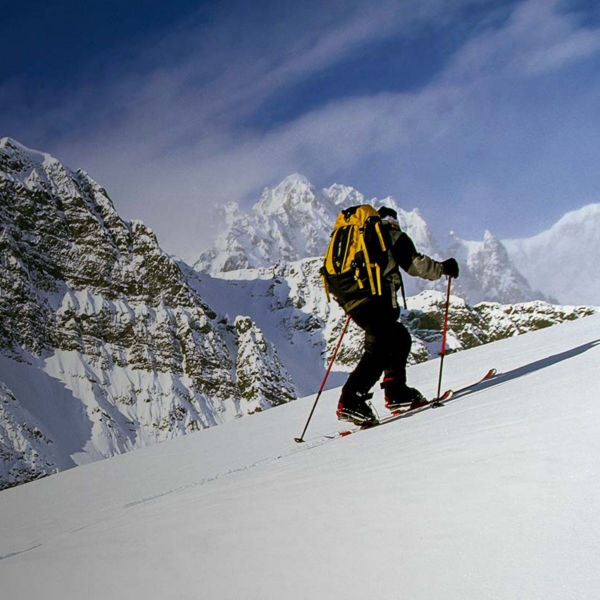
Let's be honest: Skiing is challenging, especially if you’re learning as an adult. But that doesn’t mean it should be intimidating. The best way to learn how to ski is by taking a lesson with a professional instructor. A proper lesson will introduce you to the fundamentals of skiing, ensure you learn the correct techniques, and make the experience as fun and safe as possible—all of which might not be the case if you’re learning from family or friends. It’ll cost you some money, but it’s worth it: You’ll get quality instruction and you’ll learn more quickly.
Before you hit the slopes with your instructor (or if you’ve already taken a lesson and want a refresher), here are a few tips to get you on the right track.
Ski Equipment
Having the right gear (and knowing how to handle it) will go a long way toward making your ski day more enjoyable. Once you’re sized and outfitted with the right poles, skis, bindings and boots (that fit well with long, warm socks), there are a few final considerations before you clip in for your first run.
Dress in Layers
Winter weather can vary, and once you’re exercising, you’ll warm up quickly. Dressing in layers will help you regulate your body temperature and stay comfortable. Generally, you’ll want to wear a breathable, moisture-wicking base layer to prevent you from getting too sweaty, an insulating midlayer to keep you warm, and a waterproof outer jacket to fend off snow and moisture. If you don’t have all three types of layers, wear what you have, but avoid wearing cotton or jeans, which will soak up snow and sweat and leave you freezing.
Wear Goggles and a Helmet
Protection for your eyes and head is essential when skiing. Falling down is a part of learning to ski, and a helmet is critical for protecting your head from impacts. Goggles are also a must. They form a sealed, protective barrier around your eyes to block blowing snow and chilly winds—something sunglasses can’t do.
How To Carry the Skis
There’s a lot of equipment involved with skiing, and hauling your gear to the slopes can be awkward and difficult if not done properly. To carry your skis, start by putting them together with their bottom surfaces facing each other and the bindings lined up (the prong-like binding brakes should clip together). Then hang your ski poles from the tip of one of the skis using the poles’ wrist straps. With your gloves on, hold the skis and the poles with one hand above and one hand below the bindings. Carry the skis in front of you diagonally. Be careful not to swing the skis or poles—you could hit something (or someone).
While this bundle method works well for managing all your equipment, to walk any distance you’ll want to work toward carrying your skis balanced on one shoulder. Do this by linking them together properly and hoisting the front end of the skis to one shoulder. Make sure the top ski will not slide forward and use one hand to hold down the tip of the top ski, and the other to grip both poles for added walking stability. Note the extra space needed to pick up and put down your skis—and the extra attention needed to avoid swinging the ski tails around when making turns.


















